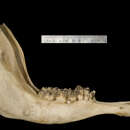tr
kırıntılardaki isimler


The name 'bontebok' is derived from the Afrikaans word, bont--meaning brightly colored. This refers to the bontebok's rich glossy chestnut brown color. 'Blesbok' is derived from the Afrikaans word for white mark on the face, 'bles'.
Damaliscus pygargus was previously known as Damaliscus dorcas. D. pygargus pygargus is the bontebok, D. pygargus phillipsi is the blesbok.
Perception Channels: tactile ; chemical
After their extinction was threatened by excess hunting and the encroachment of agriculture the Bontebok National Park was established in 1931. At that time, only 17 bontebok existed in the wild. Now bontebok are extinct as wild animals and are currently raised on game farms. In recent years, the bontebok population has recovered to 2000+ members living on various reservations throughout South Africa. Blesbok were also seriously threatened by overhunting in the 19th century, reducing very large populations to approximately 2000 individuals. Populations have recovered, however, and now seem stable. Both bontebok (D. p. pygargus) and blesbok (D. p. phillipsi) are considered vulnerable by the IUCN and bontebok are on the CITES Appendix II list.
US Federal List: endangered
CITES: appendix ii; no special status
IUCN Red List of Threatened Species: least concern
Blesbok are important as a stock animal. Both blesbok and bontebok are important game animals and provide opportunities for tourism in South Africa.
Positive Impacts: food
Bontebok and blesbok are herbivores, they graze on grasses and herbage. Blesbok eat primarily red oat grass (Themeda), but also eat grasses in the genera Eragrostis and Chloromelas. Bontebok eat primarily grasses in the genera Bromus and Danthonia, however bontebok also feed on Eragrostis.
(Kingdon 1997)
Damaliscus pygargus occurs in southern Africa. There are two physically distinct and well-recognized subspecies: bontebok (D. p. pygargus) are found in the highveld and coastal plains of South Africa, blesbok (D. p. phillipsi) are found in eastern and central South Africa. Bontebok populations are more or less confined to protected areas in South Africa.
Biogeographic Regions: ethiopian (Native )
Bontebok and blesbok are found in South African grasslands.
Habitat Regions: temperate ; terrestrial
Terrestrial Biomes: savanna or grassland
Range lifespan
Status: captivity: 23 (high) years.
Bontesbok and blesbok share an adult color pattern where the relatively dark dorsal pelage contrasts sharply with high, white stockings and buttocks. Bontebok have a dark and glossy, purplish-brown dorsal pelage, while blesbok dorsal pelage is a dull, reddish-brown. Blesbok also have dark fur on their rumps, while bontebok have a white patch surrounding the tail. Calves are born with lighter brown pelage and dark faces and are identical to the young of topi (Damaliscus lunatus). Both sexes of both subspecies develop large and curving, gazelle-like horns Their short tail is tufted with black fur. Head and body length ranges from 140 to 160 cm, tail length from 30 to 45 cm. Males are typically larger than females, with female body mass ranging from 55 to 70 kg, and male body mass ranging from 65 to 80 kg. Bontebok average 8kg lighter than blesbok, which helps to distinguish the two.
Range mass: 55 to 80 kg.
Other Physical Features: endothermic ; homoiothermic; bilateral symmetry
Sexual Dimorphism: male larger; ornamentation
Bontebok mate in February, while blesbok peak mating occurs in April. Gestation period for both is eight months. Young are born from August to mid-December. Usually a single young is birthed in a high grass area and within 2 hours after birth the young can be mobile. D. pygargus can live up to 17 years.
Range number of offspring: 1 (low) .
Average number of offspring: 1.
Range gestation period: 8 (high) months.
Average gestation period: 8 months.
Key Reproductive Features: iteroparous ; seasonal breeding ; gonochoric/gonochoristic/dioecious (sexes separate); sexual ; viviparous
Average birth mass: 6792 g.
Average number of offspring: 1.2.
Average age at sexual or reproductive maturity (female)
Sex: female: 707 days.
Parental Investment: altricial ; extended period of juvenile learning